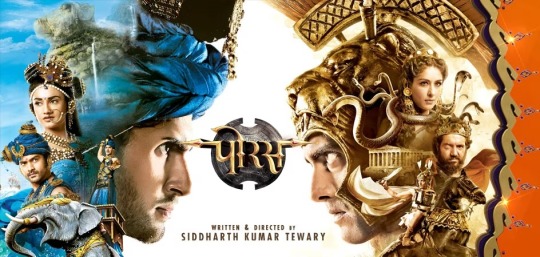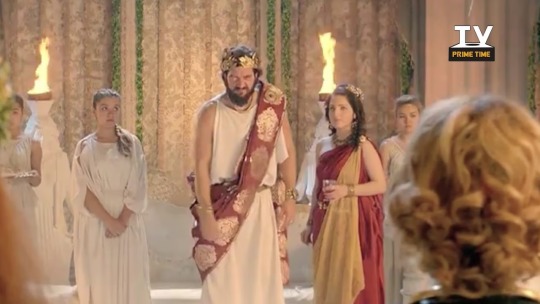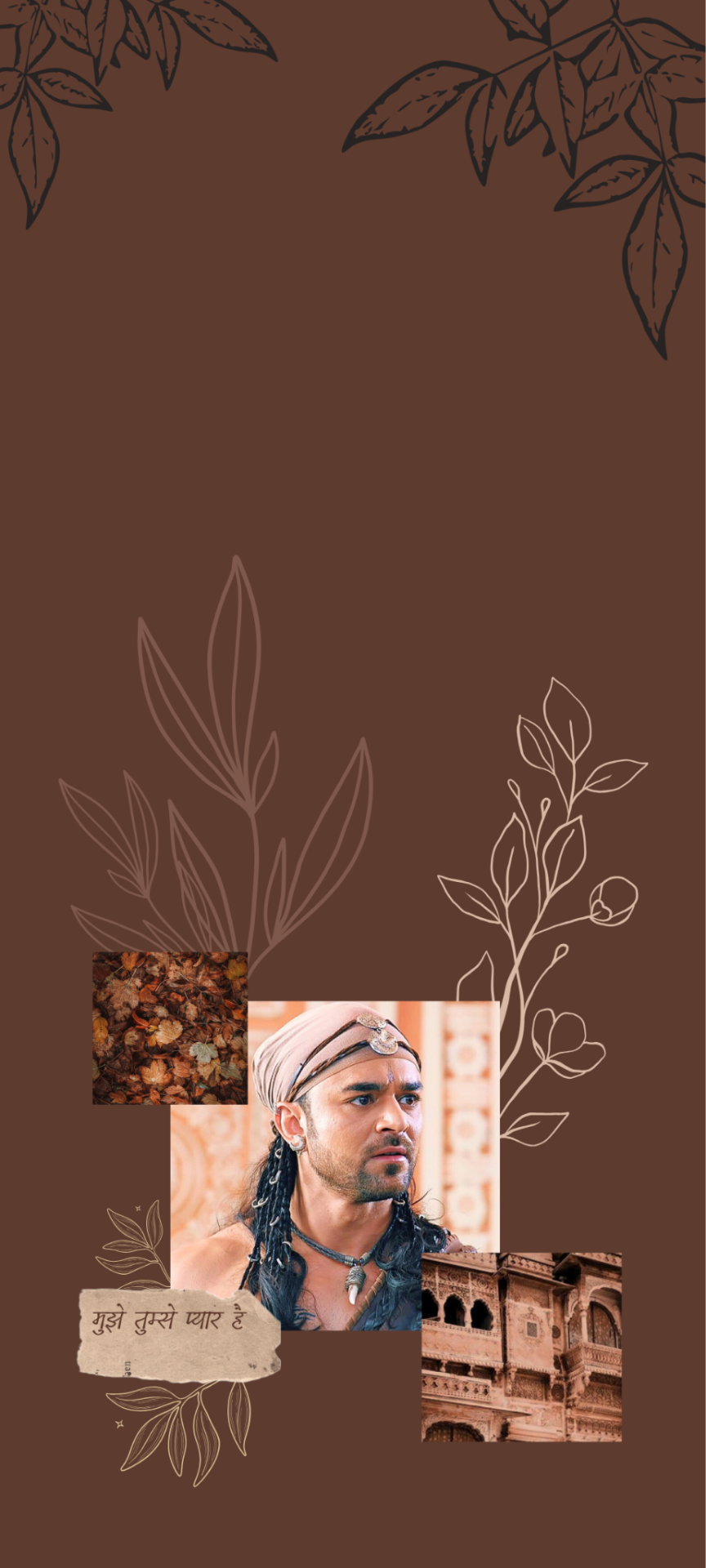#porus (TV)
Explore tagged Tumblr posts
Text





I know, I know, zero historical accuracy and everything will probably be ruined sooner or later, but… Protective Alexander :')
I am taking everything this series gives me.
#porus (tv)#alexander x hephaestion#alexander x hephaistion#alexander the great#ancient history#hephaestion#hephaistion#ancient macedonia#indian tv show
90 notes
·
View notes
Text












Mohit Abrol as Hasti (Porus, 2017)
#guess who's in love#and back with the unprompted gifsets#this fool right here#so yeah i've been watching porus#hasti is a dream i need him to marry me immediately#anyways go watch this show if you haven't#porus#indian tv#desiblr#desi tumblr#indian tumblr#gifset#mohit abrol#india
13 notes
·
View notes
Text
if anyone is curious, for my swayamvar, you will be quizzed on-
porus (tv show)
jodhaa akbar (2008)
5 maths questions
5 physics questions
4 notes
·
View notes
Text
Now I'm considering writing a fanfic (modern AU) on Alexander the Great and Roxana of Bactria after watching TV series "Porus".
3 notes
·
View notes
Note
https://www.google.com/amp/s/www.mixanitouxronou.gr/to-akrivotero-indiko-sirial-echei-thema-ti-sygkroysi-toy-m-alexandroy-me-ton-poro-i-etaireia-paragogis-legetai-svastika/%3famp=1
There's an Indian series on Alexander the Great with Poro. Because we know Bollywood, they tend to be flashy and exaggerated not to be taken seriously in terms of accuracy xd But it seems like a fun watch for those who want to see about one of Alexander's battles (and not be Hollywood)
youtube
You know what, this trailer actually sold it to me! I mean yes, I am also not so much into Bollywood style (especially intense long stares - excessive choreography and singing) but this show looks very solid. The article explains the inaccuracies (some just for drama effect, some anachronistic, some for portraying Indians as a whole uniting behind Porus but that’s to be expected since it’s an Indian production) however it also stresses the many things it got right and it looks fun. I also appreciate how they clearly made effort for accurate casting for the Greek roles. The episodes are short so I might give this a try!

Looking rad



Okay be honest Bollywood… you were inspired by Angelina Jolie’s Olympias, weren’t you 😁
By the way for anyone confused, the swastika (the production company’s symbol) is a sacred symbol in India and has nothing to do with Nazism.
26 notes
·
View notes
Text
Knowing the historically recorded ending of the Battle of Hydraspes and watching Porus is kinda awkward no offense.
3 notes
·
View notes
Note
Sundrop didn't want that so as not to miss moondrop Also that there is no one and the sundrop is doing something abnormal that it says "turn it on for me all the light seasons I wanted to worry you if you turn it on" otherwise that at this moment in a few years it expects some sleep over the defeated and moondrop likes to go to sleep, very much that in a few seconds they will turn off the lights because because they were like today and the time of the minute is from 11:00 how can they help me and I will get to know these examples, Sundrop has something in his brain he laughs and everyone else what he does because that cis going on in your life how many people could see with your cool things what he has kindergarten is toys and fun because moondrop no one will let him do it and he sleeps about nothing he does nothing only himself doesn't exist he says it's "I don't mind it" " it's serious in the end he'll die that's how he does it, moondrop is the moon And in so much life he never loves anything and no one says, this disease poru can have autism, a few people do what they do and we have nothing to do like us, everyone loves as a sundrop, it exists them how they could meet with children and moondrop stays in autism, sundrop is really sunshine is very nice, moondrop really didn't want to play with him sundrop because moondrop will have severe autism for several years and he does it himself what he didn't want, sundrop says that he's cool and moondrop like he doesn't want to see anything on tv This daycare'a can't be so abolished only from this years will no longer be this family what happens to you Have a nice day
I can't really respond to this normally, so instead I'll use the ask to simply ask a couple things.
for future reference: please use proper punctuation if possible! at least when you're typing out something as long. not trying to be mean, it's just very difficult to read and understand what you're trying to convey. I think most of the text is still completely missing me, which is why I can't really reply properly
from what I got here though, this ask is completely unrelated to the AU the blog is about, and is about the canon sun and moon. keep the asks related to the AU please.
64 notes
·
View notes
Text
How Indian TV Serials Have Captivated Audiences for Decades

Since the first Indian television serials were broadcast in the late 1980s, they have captivated and entertained audiences for decades. The popularity of these TV serials has grown over the years, and today, they are some of the most watched shows in the country. From soap operas to costume dramas, Indian TV serials have a wide range of genres and storylines.
Indian TV serials are known for their melodramatic storylines and often-cheesy dialogue. The most popular shows are typically soap operas, which are stories that follow the lives of a group of characters and explore themes such as family dynamics, relationships, and social issues. These shows often feature large casts and are often filmed in melodramatic settings. Popular soap operas such as Kyunki Saas Bhi Kabhi Bahu Thi, Kahaani Ghar Ghar Ki, and Bhabhi have been running for more than a decade and still remain popular with audiences.
Costume dramas are another popular genre of Indian TV serials. These shows often explore Indian history and culture and are set in a period before modern times. Popular costume dramas such as Jodha Akbar, Mahabharat, and Porus have captivated audiences with their dramatic storylines and stunning costumes. These shows typically feature a large cast of characters and are often filmed in lush settings anupama spoilers.
Another type of Indian TV serial is the daily soap. These shows typically air every day and follow the lives of one family or group of characters. Popular daily soaps such as Diya Aur Baati Hum, Yeh Rishta Kya Kehlata Hai, and Naagin have been running for years and remain popular with audiences.
Indian TV serials are also known for exploring social issues such as poverty, gender inequality, and casteism. These issues are often explored in the context of melodrama and often feature characters from different backgrounds coming together and overcoming their differences. Popular shows such as Balika Vadhu and Bade Acche Lagte Hain have explored such issues and resonated with viewers.
Indian TV serials have a wide range of genres and storylines, and they have captivated audiences for decades. The popularity of these shows has only grown over the years and they remain some of the most watched shows in the country. From soap operas to costume dramas, these shows explore a variety of themes and issues that are relevant to viewers. As Indian TV serials continue to evolve, they will remain a popular form of entertainment for many years to come.
2 notes
·
View notes
Text
OH MY GOD
Just when I was ready to give up on this series, SUDDENLY THIS
#the literal fade to black too LMAO#don't tell me they didn't sleep together after this because I don't believe you#porus (tv)#alexander x hephaestion#alexander x hephaistion#alexander the great#hephaestion#hephaistion#ancient history#ancient macedonia#indian tv show#trying to remember that Alexander is a terrible person in this series#but when they show me this I stop functioning
44 notes
·
View notes
Text




You guys knew it was a matter of time until I came up with these, right?
🤍 Maharaj Hasti lockscreens 🤍 for literally no one but myself
Feel free to use and reblog ✨
#I'm so in love with him it's not even funny anymore#college break ends in six days so if anyone wants to request anything this is the time#i missed making these#singlehandedly trying to reawaken the porus fandom (was it ever awake to begin with?)#khair GO WATCH THIS SHOW#lockscreens#porus#aesthetic#indian tumblr#desi tumblr#desiblr#indian tv#phone wallpaper#mira's edits
11 notes
·
View notes
Text
The accidental sexual tension between Alexander and Porus in the Porus tv show was so......
12 notes
·
View notes
Photo





from @bloodfleurs and our jaunt trapsin some good prairie complex at Chaparral Prairie.
The Cedar Barrens Loop Trail, mid summer and mid May seem to be the best time to visit these sites but the lushness of a nice cedar glade during winter is fantastic.
A cedar barren is a semi xeric prairie like opening with shallow to exposed substrate that is surrounded by eastern red cedar, oaks, dwarf hackberry, kentucky coffee tree, osage orange, virginia pine, white cedar, short needle pine, ridgid pine, and other sub shrub/understory/midstory species. For the most part, many of these species are never found directly all at the same time. Each cedar barren will have a different forest make up with species from these lists missing or species more abundantly present than others, or species mentioned missing. In sections where cedar thickets are more present than other tree species around the cedar barrens and water seepage prevents forms of fire breaks in many cases, we call these cedar glades; these tend to be a lush and damp, dense shade species rich ecosystem of: terrestrial moss species, ebony spleenworts, and running ground cedar and not much else. Comparing organic horizons between cedar forrests to see the depth of organic matter will help identify these sections as a true red cedar thicket or an encroachment of red cedar on what was extremely productive, forbe and grass rich, barren. Acidic duff(new shed) is often shallow on the surface caused by aborted awls that fall to the ground from canopy closure among the cedars. Cedars in exposed areas away from these little seep islands will usually torch and not survive since they are very fire prone and easily catch; this is why, in the barren proper we don't seem to see eastern red cedar often, if we do, we see young individuals that haven’t caught on fire yet.
If a barren that has been subject to fire suppression to long is found, many times the adjacent cedars are encroaching on the opening and are often cut down and back to the section of forest where natural fire breaks can be identified by running water, average field capacity monitoring of water saturation, species present, and other signs. If you watch grow deer tv on youtube or have been part of the volunteer process for any of the state barrens and glades or TNC(the nature conservancy sites) the methods for removal are often variable. Many practice a chop drop and stack method, never bringing in heavy equipment that could compact the soil or bring in weeds. Once piles are manageable, they allow them to be seasoned for a bit prior to setting up a controlled burn. The piles are often stacked around stumps in the barrens where etiolation barriers were present at one point. Fire lines and site training protocol for rx burns are done and so are mock site situations prior to the scheduled burn date range, if conditions are right during that range they clear fuel load by burning which encourages light penetration on the site and helps dormant seeds germinate.
Many seeds can remain dormant for long periods of time before germinating, some even require denaturing of the seed coat, fire scarification, or smoke scarification to promote more germination. Besides thickened insulating bark, several other mechanisms for fire adaptivity in woody plants are present; the two main forms seen often are rhizome regrowth or basal regrowth. Basal regrowth is very cool and is often explained through lignotubers(large underground storage sections that often resemble sunken caudex or basal burl and are a part of the root crown/flare system in many fire adapted species, these lignotubers have energy reserves for fast regrowth mechanisms and are heavily associated with fire) and epicormic buds(dormant adventitious buds that respond to chemical signaling factors in the plant caused by the plants response to external or internal rapid change.) along these sunken fire adapted crowns. If you also study eastern woody species, you’ll notice that there is a somewhat consistent overlap with ring porus trees and fire adapted ecosystems, though, this is just something that may overlap and correlation won’t tell you about causation in full neither will causation be directly associated to correlation; in other words, no one has enough data on this concept for it to mean anything yet and it could have nothing to do with fire adaptability but more to do with weather patters. Trees in the north tend to be more ring diffuse woody species.
20 notes
·
View notes
Text
Anonymous asked: I hugely appreciate how educated you are with your education in the Classics (at either Oxford or Cambridge I think) but I ask with sincere respect how does any of it inform your privileged life in this day and age? It’s easy to say how much we should value our European traditions and heritage it is quite another to live it out don’t you agree? What do you personally get from it?
This is a very relevant question and I apologise if I have stalled in answering it as I was busy with work and life to formulate a worthy reply. But your question is an important one indeed for anyone who harkens to the past as a guide for the present and the future.
I won’t waste space here and tick box all the purely academic reasons why the Classical world is still relevant for us today. I think you can find that in easy to read books and articles written by eminent Classicists who do an admirable service in making the Classical World come alive for the general public (Mary Beard, Bettany Hughes, Emily Wilson, Edith Hall, Peter Jones, Bernard Knox, Robin Lane Fox, Paul Cartledge, and Donald Kagan amongst others that come to mind). But it’s an uphill battle to be sure.

Classics - at least in United Kingdom - has been regressively marginalised with each passing generation starting from school up to university entry. It has an image problem. Few pay much attention to scholars of Latin and Greek. The impression is that Classicists are snobbish and is the education of privileged elitists who master languages that are not spoken. They learn to write them only to read them better. They slap your hands when you write a Latin word common in Sallust or Livy, rather than in Cicero. There is some truth to that sadly. To a large extent Classicists themselves have not been a good advertisement for why anyone should appreciate let alone study the classical world.
At one end those educated in the Classics can come across as encouraging elitism, snobbish pedantry and a sniffy social superiority and at the other end those not versed in Classics but through Hollywood (any sword and sandal film like Gladiator etc) and PC white washed TV series (BBC’s Troy is a good example) have formed a romantic attachment to the ‘heroic’ past by having blue pilled themselves into escapism. Both extremes makes Classics a fetish rather than a guide for life through the beauty and power of the language and culture of the singular Greeks and Romans.
The study of Classics can become the proverbial dog who can dance on two legs, but for what practical purpose? There is the rub. Classics, at its best, offers the historical, philological, and literary foundation and discipline to apply a critical method to every general aspect of learning - and living.
I was fortunate that I had Classicists - both within my family and also my teachers - who were cultured and had led such interesting lives and were able to marry their Classicist mind to their life experiences (often through the experience of war). So learning European languages was not just to get one’s head around arid esoteric articles by 19th-century Frenchmen on the Athenian banking system or Demosthenes’ use of praeteritio and apophasis, but also to appreciate the genius of Dante,Voltaire and Goethe. Classics should never just be about philology though because it can result in a life mostly missed.
Perhaps others might call it privileged but I consider my childhood blessed because I was surrounded by family members who were educated in the Classics - more rare than one might suppose. Through my great aunts and grandmother they instilled the discipline that the mastery of Latin and Greek fuelled the ability to speak and write good English -- and why the latter mattered as much or more than the former.

By the time I left both Cambridge and Oxford behind, I could cite passage numbers in Greek texts of what Thucydides and Plutarch thought of Nicias. But it was only when I went through Sandhurst to pass out as a commissioned army officer did it truly jump off the page and become alive for me.
Moreover having had long fire side conversations with both my grandfather and father - both Oxbridge educated Classicists and both served in distant different types of wars as swashbuckling officers - did I use that learning to understand why for example was Nicias such a laughably mediocre general of the Peloponnesian War. And this was essentially the practical point of reading Thucydides and Plutarch about Nicias in the first place.
I spent many hours in my down time during my service in Afghanistan between missions re-reading dog earred favourite Classicist texts. I began to see the ghosts of the Greeks in the characters of those with whom I was serving. Some began to resemble Sophoclean characters - especially the less well-known ‘losers’ like Ajax and Philoctetes - the sort of tragic heroes whom we root for but the odds are against them - think of any American Western film or the more pathological Tarantino films. Like Sophocles I saw majestic characters (some special forces operators) out of place in a modernising world who would rather perish than change - but in a context where their sacrifice schools the lesser around them about what the old breed was about and what was being lost.
A running thread from a childhood spent in many other countries - from South Asia to the Far East - to the present day is learning to appreciate our landscape as the Ancient world did. The cultivation of curiosity of cultures was seeded in childhood. Respecting and even admiring other cultures - Indian, Iranian, Chinese and Japanese primarily come to mind - led me to appreciate and treasure my own cultural heritage and traditions. The DNA of both the Roman and Greek world went far and wide and so teasing out their fingerprints was fun. In northern Pakistan, we came across ‘Alexander’s children’ - children with blonde and blue eyes who were said to be descended from Alexander the Great’s time in Afghanistan and India - and wandering around the banks of the Jhelum river imagining how Alexander beat his respected foe (later ally) King Porus at the Battle of Hydaspes in 326BC.
These days despite having a busy corporate career I help support running a French vineyard managed foremost by two exceptional cousins and their French partners. As such the Classics still resonate in how I look at the land beyond the vineyard - bridges, roads, towers, walls - and imagine the Greeks not with ink and papyrus but as men of action, farmers and hoplites, in a rough climate on poor soils. I suddenly envision them pruning and plowing in Laureion, the Oropos, and Acharnae, more like the rugged local farmers with whom come harvest time I roll my sleeves up and get my hands dirty in the vineyards than as the professors in elbow patches who had claimed them.

Knowing and learning about the Classical roots of our Western heritage isn’t just a question of culture it’s also about what personally motivates us in life and how that determines how we make consequential choices in life.
I live in fear of one Greek word ‘akrasia’. Ancient Greek philosophers coined the term to explain the lack of motivation in life. Most of the philosophical conundrums explored by contemporary philosophers were already explored in Ancient Greece. In fact, Ancient Greek philosophers laid the solid foundation for all philosophical approaches that appeared throughout history: theories of Kant, Hegel or Nietzsche would never exist without Socrates, Plato or Aristotle.
Among the many problems that baffled the Ancient Greeks, one of them gets quite a lot of attention today. Why don’t we always do what’s best for us? Why do we abandon good decisions in favour of bad ones? Why can’t we follow through on our plans and ideas?
Many people would say that the answer is simply laziness or decision fatigue, but Ancient Greek philosophers believed that the problem lay much deeper, in human nature itself. ‘Akrasia’ describes a state of acting against one’s better judgement or a lack of will that prevents one from doing the right thing. Plato believed that akrasia is not an issue in itself, because people always choose the solution they think is the best for them, and sometimes it accidentally happens that they choose the bad solution because of poor judgement. On the other hand, Aristotle disagreed with this explanation and argued that the fault in the human process of reasoning is not responsible for akrasia. He believed that the answer lies in the human tendency to desire, which is often far stronger than reason.
As with almost all philosophical concepts, a consensus has never been reached and akrasia remains open to interpretation. But its practical consequences are all too real in today’s world. Motivation is what makes us unpredictable and persistent, and the life circumstances of the modern world often make motivation disappear.
Today - regardless how old or young one is - many are more and more tempted to exchange a long-term goal for an immediately available pleasure in all its forms from the emotional band aid of porn from a lifeless relationship (or a lack of one) to escaping loneliness for the false intimacy of social media friendship. The lack of motivation can cause us to reduce ourselves to someone else’s standards when we know we can be or do better.

The Greeks felt that the way you think and feel about yourself, including your beliefs and expectations about what is possible for you, determines everything that happens to you. When you change the quality of your thinking, you change the quality of your life. I’ve been deeply influenced by Aristotle’s idea that virtue is a habit, something you practice and get better at, rather than something that comes naturally. “The control of the appetites by right reason,” is how he defined it. Another way to reframe this is to say, “Virtue is knowing what you really want,” and then building the intellectual, spiritual, and moral muscle to go after it.
To be cultured - as opposed to be merely educated - is how you put what you’ve learned to work in your own life, seeing the world around you more deeply because of the historical, literary, artistic and philosophical resonances that current experiences evoke. This is the privilege of being cultured. For me Classical stories come often to my mind, and some times provide guides to action (much as Plutarch intended his histories of famous men to be guides to morality and action). The classics then are a part of my mental toolset and the context I think with some of the time. I see that as the real blessing in my life.
Thanks for your question.
170 notes
·
View notes
Text
Christina Schmidt on Her Status as a Body-Positive Role Model
Since her days starring as the ill-fated Terri on Degrassi: The Next Generation (her character was insecure about her body, struggled to fit in and eventually fell prey to an abusive boyfriend), Christina Schmidt has been a role model for anyone who’s lacking in self-love.
“Growing up, I never thought I was an inspiration to anybody in any way,” says Schmidt, who now works as a model and is based in Toronto. Full-figured TV leads were rare when she joined Degrassi in 2001 at age 14. “I never realized that some of these young girls really needed someone to look up to,” she says. “There wasn’t Instagram or Facebook, and the majority of television stars were definitely not as diverse as those you see today, so having someone like them on a TV show was huge. This all just started making sense to me years later, though, when they would express how I made such an impact on their lives.” Almost 20 years have passed and Schmidt is still receiving fan mail about the show.
It may have taken time for Schmidt to realize the potency of her relevance in pop culture, but her confidence and positive vibes were palpable at our FASHION cover shoot, where she rocked a body-con Balmain maxi-dress. “A lot of curvy girls wear things that don’t show their shape—they wear baggy T-shirts and baggy pants to cover everything up,” she says, acknowledging long-standing notions about what types of clothing are deemed appropriate for what body shapes. She points to tropes like horizontal stripes adding width to a body frame as something that will deter many from experimenting with fashion.
Photography by Porus Vimadalal. Styling by Lucia Perna. Creative direction by George Antonopoulos. Art direction by Danielle Campbell. Hair and makeup, Susana Hong for P1M.ca/Armani Beauty. Hair and makeup assistants, Arielle Park, Kaila Baker, Romy Zack and Sierra Elliott. Manicures, Leeanne Colley for P1M.ca/Tips Nail Bar. Fashion assistant, Pouyan Reisdanaee. Photography assistants, Arash Jahromi and Saishi Xu. Dress, $3,750, Balmain at The Room at Hudson’s Bay. Shoes, $195, Jeffrey Campbell. Earcuffs, from $355, Alan Crocetti at Archives Boutique. Ring, $550, POG at Archives Boutique.
But Schmidt recalls being drawn to the expressive potential of style early on. As a teenager in Kitchener-Waterloo, Ont., she’d cut up and customize T-shirts and sweatshirts. And she says that her exposure to the fashion industry has helped her to develop an adventurousness when it comes to dressing—through “the power of combining two things I’d never put together, opening my mind to colour and shapes and stepping outside a safe boundary.”
Schmidt shops everywhere—from vintage stores to Holt Renfrew—and expresses great enthusiasm over the number of brands that are expanding their size range while refusing to exploit the “plus” classification as a marketing tool. She highlights a gig she had with beauty line L’Occitane as an important example. “They just wanted me,” she says. “It wasn’t anything about diversity.”
“As long as you feel good, that’s all that matters. When you feel confident, people notice that more than anything.”
She also includes work for Canadian designers Hilary MacMillan, Lesley Hampton and Hayley Elsaesser on her resumé, as well as a video appearance for fellow Degrassi alum Drake, leaving no doubt she’ll continue to be a strong example of self-assurance for many.
“It’s about embracing everything and not being scared,” she says about her personal style mantra. “Never care what anybody thinks. I know that’s such a simple thing to say, but, really, you could be styled by the best stylist in the most expensive outfit and there’d still be somebody who doesn’t like it. As long as you feel good, that’s all that matters. When you feel confident, people notice that more than anything.”
See the rest of this issue’s cover profiles here.
The post Christina Schmidt on Her Status as a Body-Positive Role Model appeared first on FASHION Magazine.
Christina Schmidt on Her Status as a Body-Positive Role Model published first on https://borboletabags.tumblr.com/
2 notes
·
View notes
Text
Okay, yes, I know, I’ve posted about the Indian tv show Porus before but this show is just so hilariously over the top, I have to share it with the world:
Olympias practically demands of Zeus to give her a child in the most epic speech ever and gets impregnated by him via a hord of CGI snakes
Later, she gets mad when one of the priestesses tells her she can’t be present at Alexander’s birth and, out of revenge, sets her temple on fire!
Alexander reading a completely inacurrate “excerpt” from the Iliad
Alexander and his half-brother Arrhidaeus having a sword duel TO THE DEATH in the king’s bedroom
It’s the gift that keeps on giving.
18 notes
·
View notes
